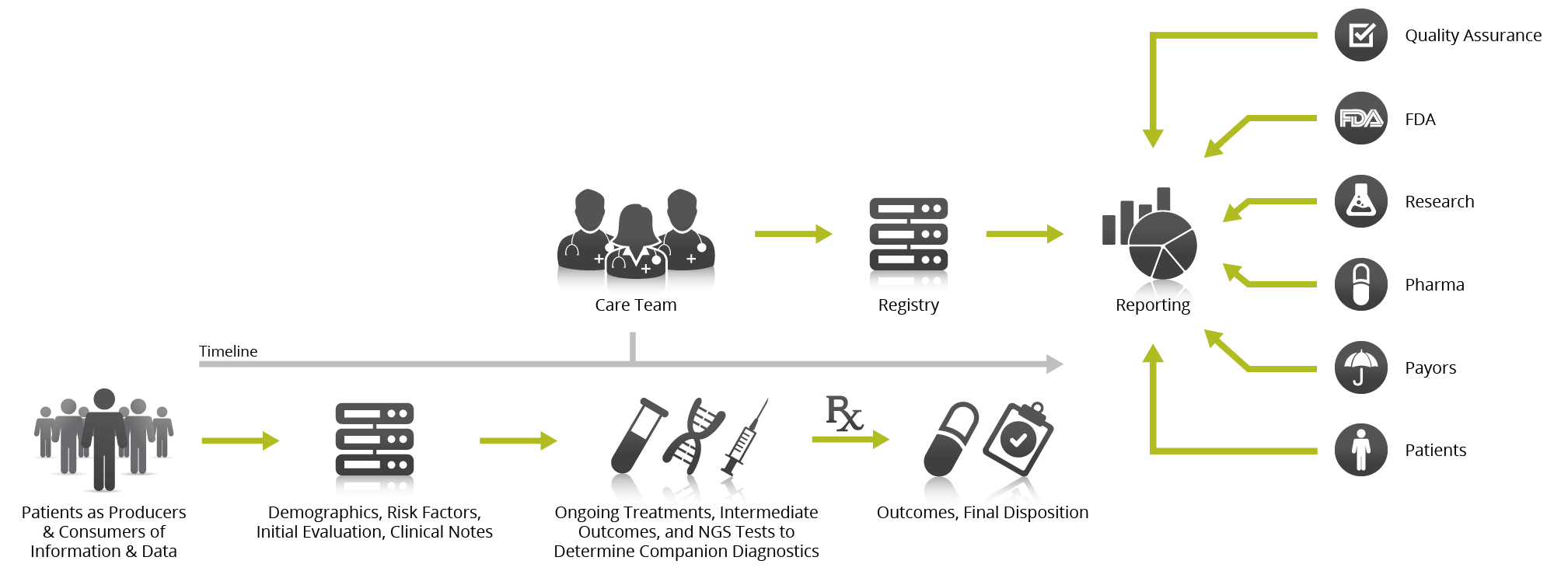Diagnostic Data in Precision Medicine: Explore How Laboratory Informatics Impacts Population Management and Patient Care
At this year’s Executive War College, I was joined by Diana R. Brooks, Director of Program Development, Anatomic Pathology, here at XIFIN, and Julie Ramage, National Account Director, Diagnostics, at Pfizer Oncology as we presented strategies and the value proposition of diagnostic data in precision medicine.
This panel explored how implementing a laboratory informatics infrastructure facilitates data curation for clinical validation and quality reporting. We also discussed the impact on population health and how properly curated data drives high quality patient care. The panel reviewed how aggregates of data can be utilized to drive a return on investment for the lab and how data quality is consumed by patients in care decisions.
The following topics were covered by the panelists:
- A laboratory focused approach for data curation, management, and usages as it pertains to the various stakeholders in the era of precision medicine
- Adoption of diagnostics focused frameworks in support of the patient care continuum
- Case study and strategy on how laboratories can derive value from existing data asset
Changing landscapes, challenges, and trends—and what it all means for laboratory data
Technological advancements have led to the exponential increase and complexity of data as in the case of next-generation sequencing and molecular diagnostics testing in precision medicine. Challenges arise from the sheer increase in volume of data generated from across the laboratory landscape and the lack of connectivity with other data such as clinical and financial records that create a holistic approach to patient care. The laboratory industry plays a key role in patient care. An industry that has many stakeholders generating meaningful or actionable data which requires a well thought out approach and methodology to maximize the potential for improved patient care and outcomes reporting.
Clean data in, clean reports outs, more approved reimbursements
An effective data curation strategy requires a methodology that brings clinical, diagnostic and molecular data together with financial data. Data that directly ties to patients from diagnosis through treatment includes well documented test ordering, treatment regimens and reimbursement that is directly tied to clinical records.
Table 1 illustrates the results of an internal analysis of how appeals in the oncology space for accessions where reimbursement increase in cash received ranged from $114 to $457 when clinical notes were provided (e.g., complete with clinical notes and test results from the entire care team).
Table 1. Analysis demonstrating increase in receivables when clinical documentation included from the across the care team (radiology-pathology-oncology).
An informatics approach to data aggregation, retention/management, and reuse can help ensure laboratories are set-up for patient, physician, and financial success. Not only does this help manage patient populations, but it also helps to coordinate patient care, providing yet another level of value to healthcare partners.
Information architecture, data flow and stakeholders
Figure 1. illustrates the stakeholders is an example of how clinical records and data can be aggregated, stored, and utilized for precision medicine and patient population management, benefiting the overall continuum of care. A laboratory focused informatics approach allows multiple stakeholders, the laboratory in the forefront, to manage data and more importantly—contribute to overall patient care. Beginning with patients and throughout the patient journey, the laboratory is the starting point and therefore, the steward of diagnostic data and has an obligation to serve patient, physicians and include other stakeholders and contribute to patient care and cancer outcomes.

Figure 1. Illustrates the information flow beginning with patients and stakeholders who are ultimately consumers of the data.
Want to learn more about the value of diagnostic data in precision medicine? Contact us today.
Published by XIFIN

